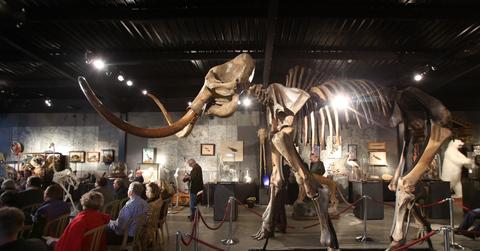Want to Bring Back Woolly Mammoths? How to Invest in Colossal
A brand-new biotech startup called Colossal aims to bring back the woolly mammoths. Want to invest? Here's everything that investors need to know.
Sept. 16 2021, Published 2:30 p.m. ET
A brand-new biotech startup called Colossal Biosciences aims to bring back woolly mammoths in the hopes of fighting climate change. Despite the fact that the company's mission is riddled with obstacles—including ethical ones—many investors want to get on board.
For those interested, here's the pathway to one seriously colossal investment in extinct wildlife and the global ecosystem as a whole.
Big-time investors are betting on Colossal.
The brains behind the fledgling startup Colossal include Harvard geneticist George Church and technology entrepreneur Ben Lamm. Together, they have built a speculative yet plausible operation that has intrigued numerous big-time investors.
A new $15 million investment into Colossal comes from a number of private equity firms as well as self-help speaker Tony Robbins. Also, PayPal co-founder Peter Thiel (who also runs the Thiel Foundation) has already injected $100,000 into Colossal's development. Thiel's investment went through before Colossal was even founded, back when Church was developing the idea with his team.
Of course, the business world sees much bigger investments all the time, but such a big bet on something so controversial and speculative says a lot.
Colossal is a CRISPR company
Colossal hopes to reintroduce the long-extinct woolly mammoth using CRISPR technology by using gene-editing technology on existing Asian elephants. Through this CRISPR editing, the team would collect embryos from stem cells or from the elephants directly, then create an artificial uterus to carry the lab-generated mammoth to term.
Unlike other CRISPR companies, whose aim is to cure rare and deadly diseases in humans, this gene-editing option doesn't have such sweeping support.
Colossal is in the early stages of lab-built woolly mammoths (and there's no shortage of obstacles)
As a business, Colossal is only days old. Its potential modern-day mammoth doesn't exist at all. With that in mind, the company is about as clinical-stage as one can get.
Plus, Colossal is dealing with a plethora of ethical quandaries. Despite the fact that the company claims to be motivated by the need for ecosystem enrichment, the dangers of messing with the past and reintroducing a species that could become problematic and invasive are impossible to ignore. Still, Lamm says about Colossal, "We’re trying to make sure that we do this in the most transparent and ethical way possible."
Got millions to spare for a speculative venture? A Colossal investment could be for you.
Colossal is nowhere near going public, which means retail investors don't have front-door access to the company. That might be for the best since the company's future successes are speculative at best. The team will be spending the next few years (if not more) researching alone. For that reason, it's best to leave this industry's propulsion to the ones with deep pockets.
If that's you, an investment is possible. You just have to be able to compete with the likes of Theil and Robbins.


